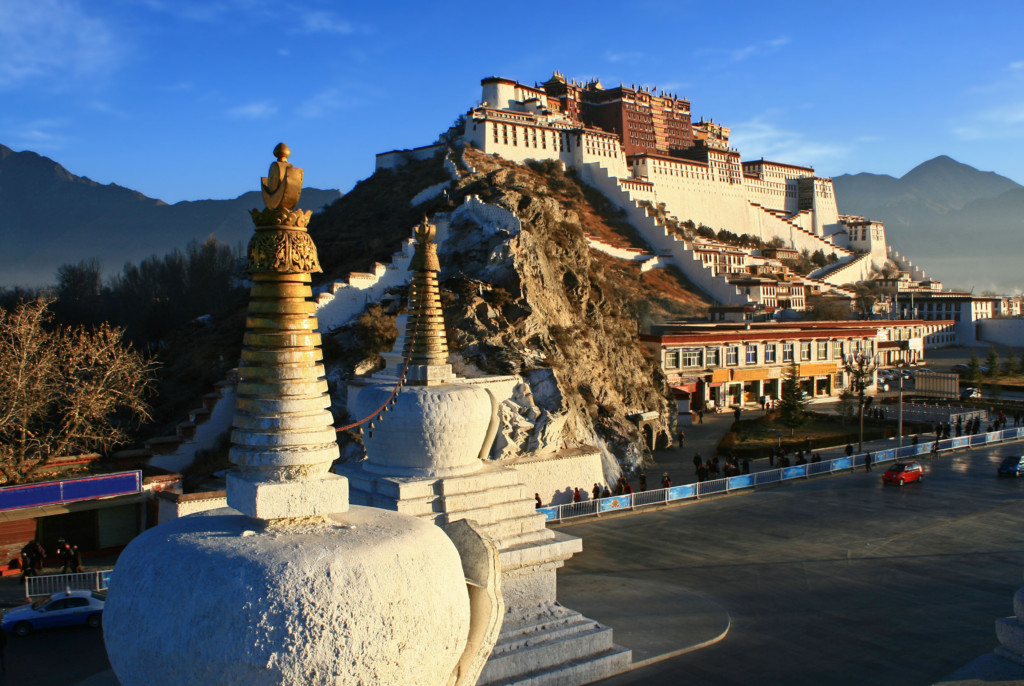
Lhasa is a fantastic city and full of Buddhist pilgrimage sites. Read this new post to learn how to get to Lhasa, where to stay and what to see!
Contact us for FREE Tibet travel planning
The Land of Snows is the travel blog of Jamin “Lobsang” Lee. I have lived and worked in various areas of Tibet for over two decades and Travel extensively greater Himalaya region in Bhutan, Nepal and Ladakh, I have decades of experience traveling, climbing and trekking the Himalayas. Here i have shared Travel informations of Tibet and other region from his own direct experiences. I hope these information will help you make your Tibet travel plan. For direct Travel consultation and Tibet Travel Agency Recommendations, Contact us via info@thelandofsnows.com.
The Place of the Gods
Lhasa ལྷ་ས་, meaning “place of the gods” in Tibetan, is the capital of Tibet. Lying at an elevation of 3600 meters / 12,000 feet, Lhasa is the largest city in Tibet. Historically, Lhasa was the capital of the traditional Tibetan region of Ü དབུས་, though today it is the capital of all of the Tibet Autonomous Region. Lhasa is a prefecture-level city that includes all of the city of Lhasa as well as 7 surrounding counties. The “official” population of Lhasa prefecture is around 580,000, however this doesn’t include people living in Lhasa whose identity cards are counted in the census of other provinces in Mainland China. The actual population of Lhasa Prefecture is closer to 1 million people.
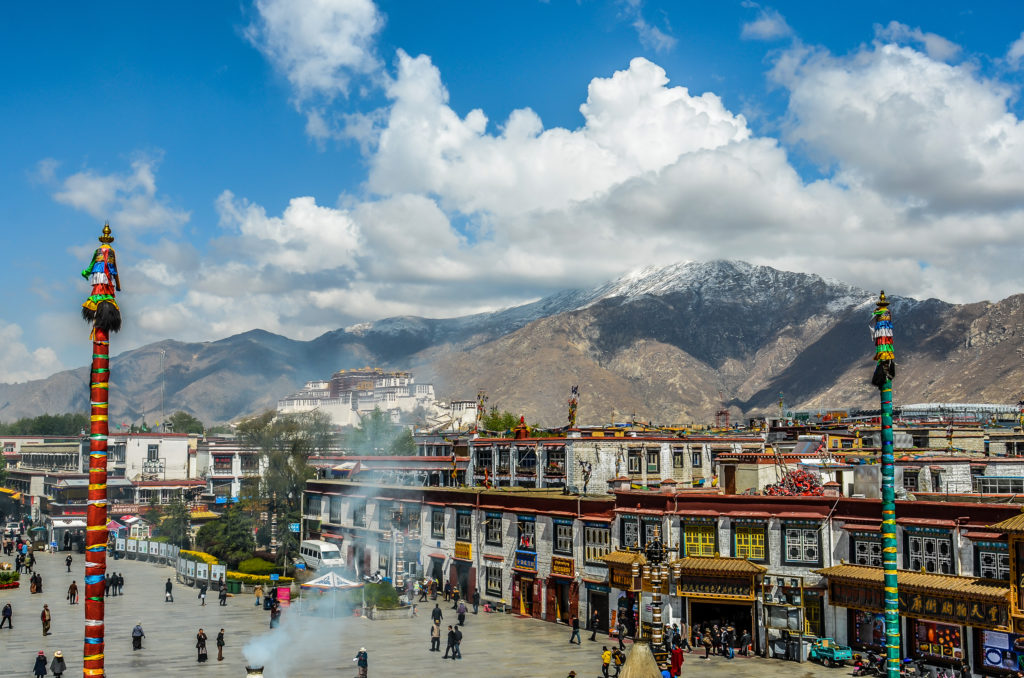
The Potala Palace viewed from the roof of Jokhang Temple in Lhasa
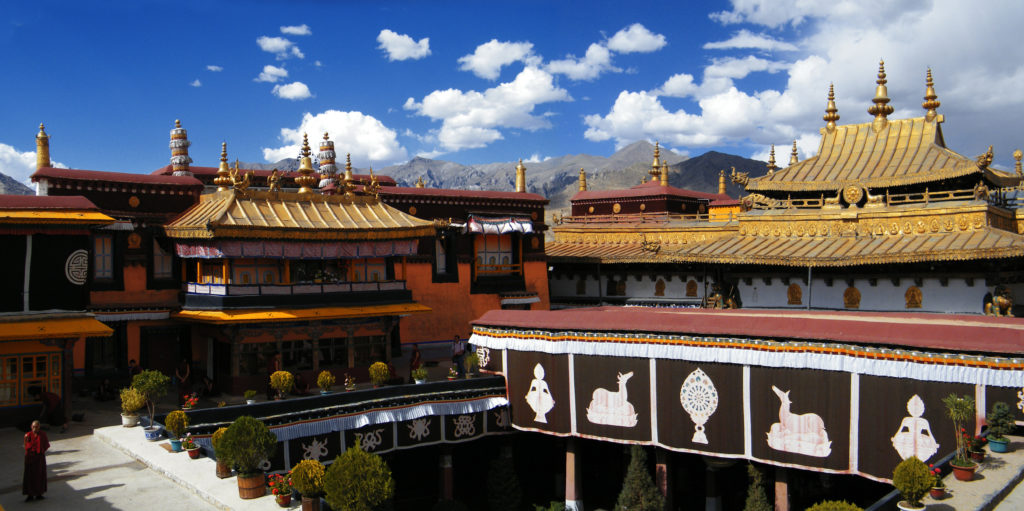
The Jokhang is the most sacred temple in all of Tibet. It is located in the Lhasa Old Town.
Though Lhasa is a large city, most travelers to the capital of Tibet stay in the Old Town, which is located on the east end of town. This area has many of Tibet’s most sacred sites including the Potala Palace, Jokhang Temple, Ramoche Temple, Tsamkhung Nunnery and more. This area also has most of Lhasa’s best restaurants along with a large selection of hotels. Each day you can see many thousands of Buddhist pilgrims walking the pilgrimage circuit around the Jokhang or Potala Palace as well as prostrating in front.
The Old Town also has the Barkhor བར་སྐོར་, a maze of narrow streets that surround Jokhang Temple. Tibetan Buddhist pilgrims walk around the Barkhor each day, often prostrating along the way. The Barkhor streets are lined with guesthouses, restaurants, tea houses, souvenir shops, billiard halls and much more. One of my favorite things to do in all of Tibet is to simply wander the streets of the Barkhor. The pilgrims, the smell of incense, quiet Buddhist temples, small Tibetan shops, great restaurants…..there are a lot of reasons why the Barkhor is amazing.
During the winter months leading up to Losar, Tibetan New Year, the amount of Buddhist pilgrims swells. Many tens of thousands of pilgrims arrive to Lhasa to visit the main temples and to prostrate in front of the Jokhang. Though the weather in Lhasa is a little cold in December and January, these are great months to be in Tibet. Few travelers are in Tibet during this time.
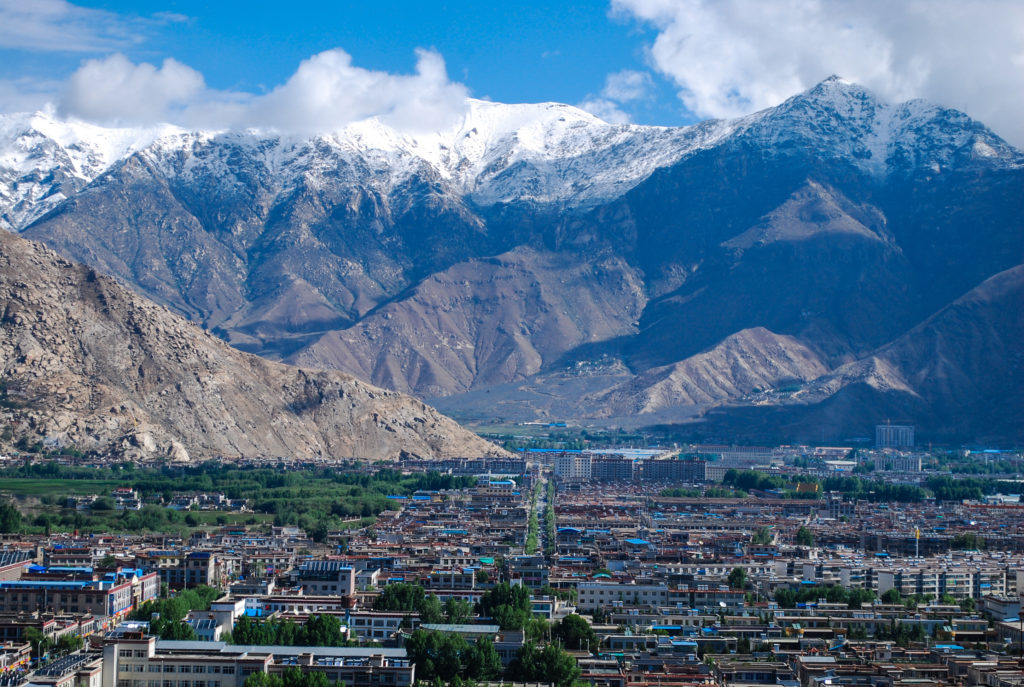
The mountains rising above the city of Lhasa
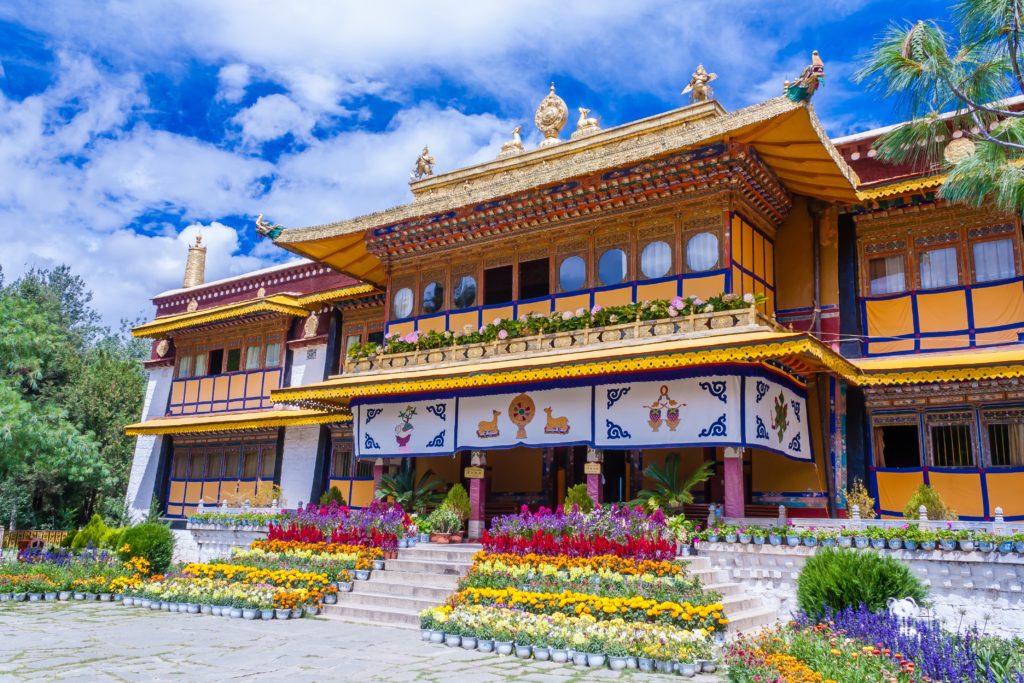
Norbulinka Palace served as the summer residence of the Dalai Lamas
How to get to Lhasa
All foreign travelers going to Tibet, including to Lhasa, must be on a full organized tour that includes a private vehicle, driver, official travel itinerary, a tour guide and travel permits. There are no exceptions. Only a travel company can arrange a journey to Lhasa for you.
There are 2 main ways to get to Lhasa, Tibet. The first is to fly. Lhasa is connected by direct flight to many cities in Mainland China. Chengdu is the best place to fly to Lhasa from as there are between 12 and 18 direct flights per day between these 2 cities. Other cities in Mainland China with direct flight service to Lhasa include Beijing, Chongqing, Xi’an, Xining, Kunming, Shangri La (Diqing) and Lanzhou. During the summer high season months, there are seasonal flights to Lhasa from other towns on the Tibetan Plateau including Xiahe (Labrang), Yushu (Jyekundo) and Kangding (Dartsedo).
Lhasa is connected internationally only to Kathmandu, Nepal. There are no direct international flights to Lhasa from any other cities.
The second main way to get to Lhasa is by train. Since July 2006, Lhasa has been connected with Mainland China by railway. Trains going to Lhasa begin in the cities of Beijing, Shanghai, Guangzhou, Chongqing, Chengdu, Lanzhou and Xining. The train passes thru many other cities in Mainland China.
Since 2008, the overland roads from Chengdu/Sichuan province and Kunming/Yunnan province have been closed to foreign travelers. This means it is not possible to travel to Lhasa from Sichuan or Yunnan provinces by automobile. It is still possible to go to Lhasa by road from Golmud in central Qinghai province. However, as the railway parallels the road (for the most part), there is little reason to go by vehicle. The train ticket to Lhasa from Golmud will be more than 10 times cheaper than the cost of hiring a private vehicle with a driver and guide.
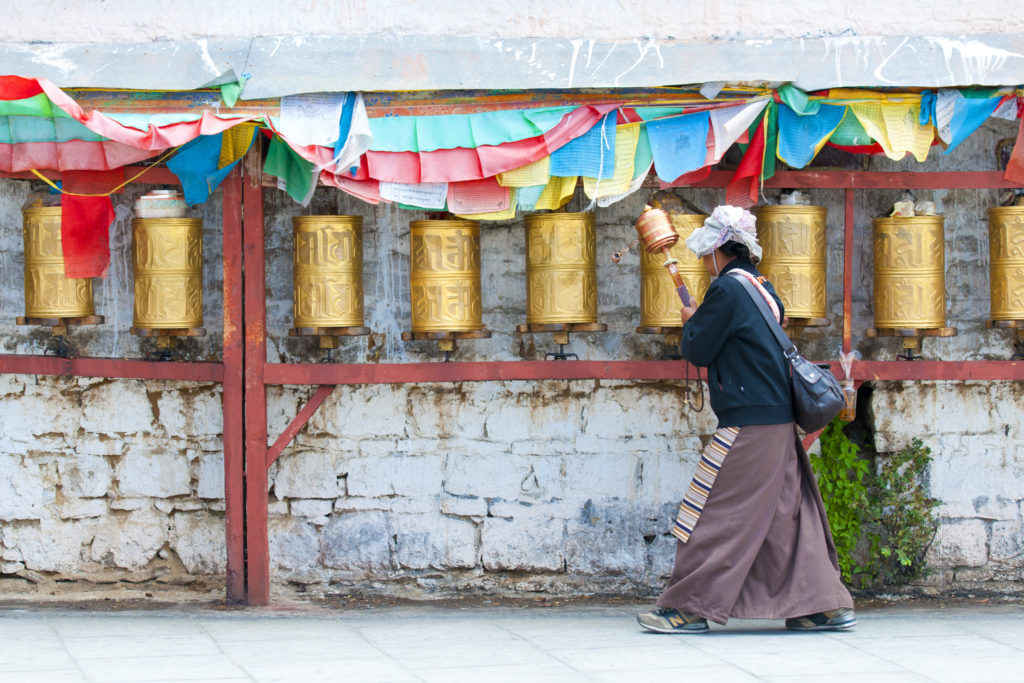
A Tibetan woman spinning prayer wheels on the backside of the Potala Palace
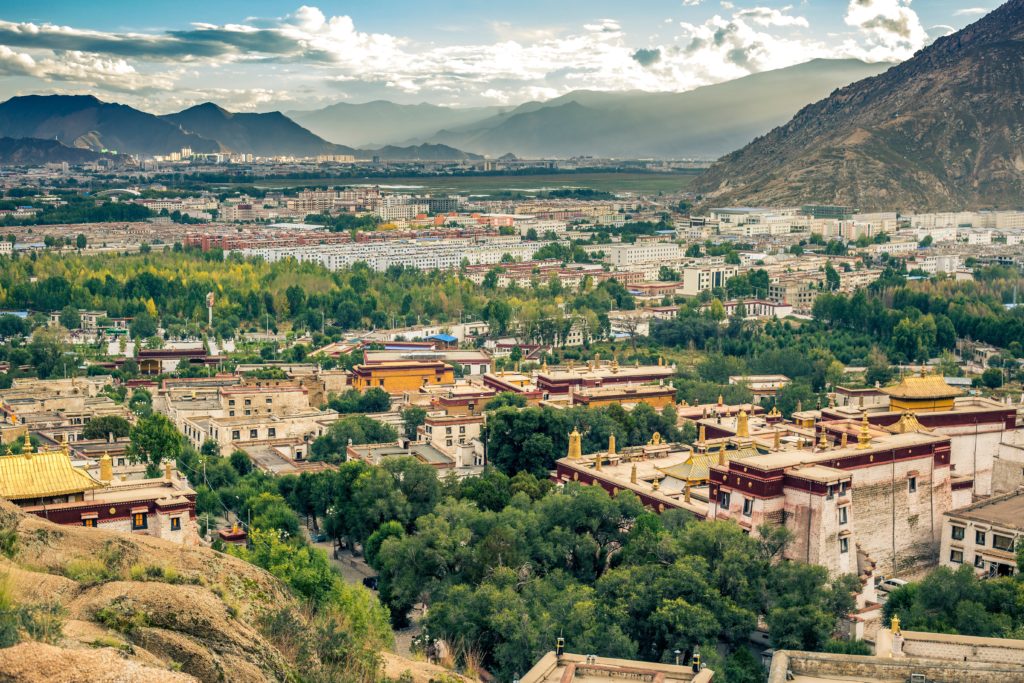
Sera is one of Tibet’s largest monasteries and is located in Lhasa
Top Places to See in Lhasa
Lhasa has many of Tibet’s most sacred sites. Here is a list of the top places to see in the capital of Tibet:
Jokhang Temple: This temple sits in the heart of the Old Town and dates back to the mid 7th century. Everyday many thousands of Buddhist pilgrims walk the ancient pilgrimage circuit around the Jokhang. In the early mornings, large pillars of smoke pour out of the large incense burners in front of the Jokhang. The most devout will spend hours prostrating in front of the temple, which houses the most revered image of Buddha in Tibet.
Potala Palace: This impressive building contains over 1000 rooms and towers over 100 meters above the valley floor. The Potala served as the winter residence of the Dalai Lama until 1959. Though it is more like a museum now, it is still the most amazing structure in Tibet. No matter how many times you see it, you can’t take your eyes off of it.
Drepung Monastery: Located 8 kilometers outside of Lhasa, this was historically the largest the largest monastery in Tibet. In the 1930’s, there were around 7700 monks living here, though at times the monk population was closer to 10,000. Though there are now only around 500 monks here, it is still a very special place to visit. If you have time, hike the pilgrimage circuit around the monastery.
Tsamkhung Nunnery: This small, but friendly nunnery, is the only one in the Lhasa Old Town. It is located near the Muslim Quarter, not far from the Flora Hotel. The 40 or so nuns that live here normally allow you to photograph inside, even during prayer times.
Ramoche Temple: Located on a very lively street in the Old Town, the Ramoche houses another of Tibet’s most precious Buddha statues. Surprisingly few foreign travelers visit this temple. Definitely worth it.
Norbulinka: The former summer palace of the Dalai Lamas is a good place to be during the annual Saga Dawa Festival as well as during the summer Shötun (Yogurt) Festival.
Lukhang Temple: This is little-known temple that is certainly worth a visit if you have the time. It is located behind the Potala Palace on a small island in a lake. There are some excellent murals here, some of the best in Lhasa.
Sera Monastery: Another of Tibet’s large monasteries, Sera is located some 5 kilometers north of Lhasa. This monastery is quite well known for the monk debates that take place Monday thru Friday from 3pm to 5pm. If you are feeling acclimatized to the altitude, try hiking up to the Sera Ütse, that large, yellow building way up the mountain side.
Nechung Temple: This small temple is located just a short walk below Drepung Monastery as is famous for being the home of the Oracle of Tibet.
Barkhor Circuit: This pilgrimage kora goes around Jokhang Temple and is one of the biggest highlights of a journey to Tibet. Walking elbow-to-elbow with thousands of Tibetan Buddhist pilgrims. many of whom are chanting mantras, thumbing prayer beads and spinning prayer wheels. Walk this many times during your time in Lhasa!
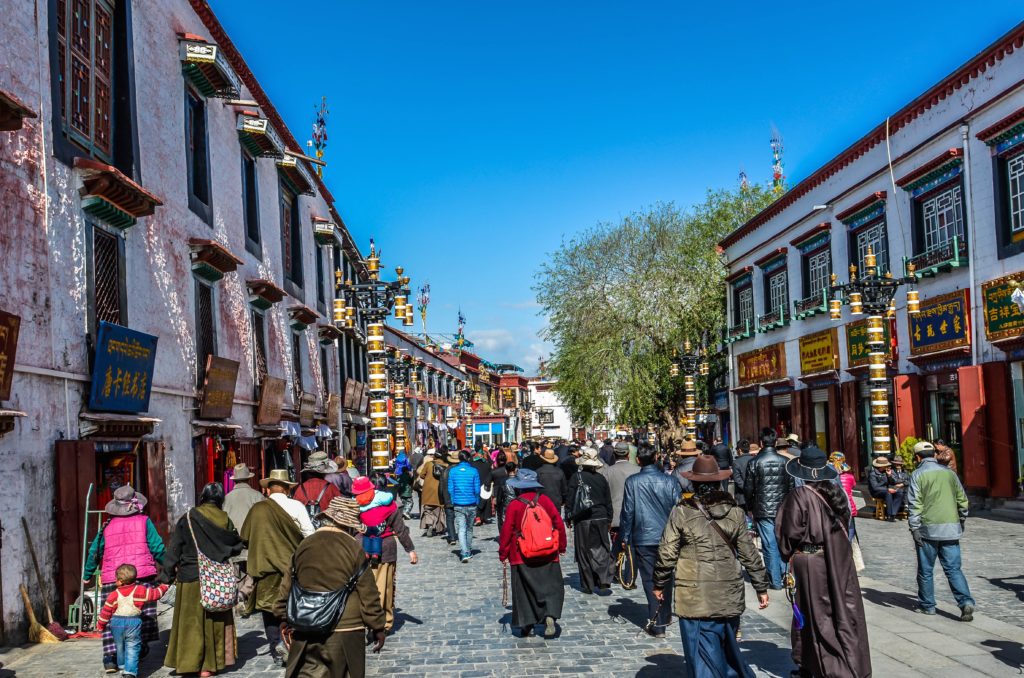
Pilgrims walking around the Barkhor
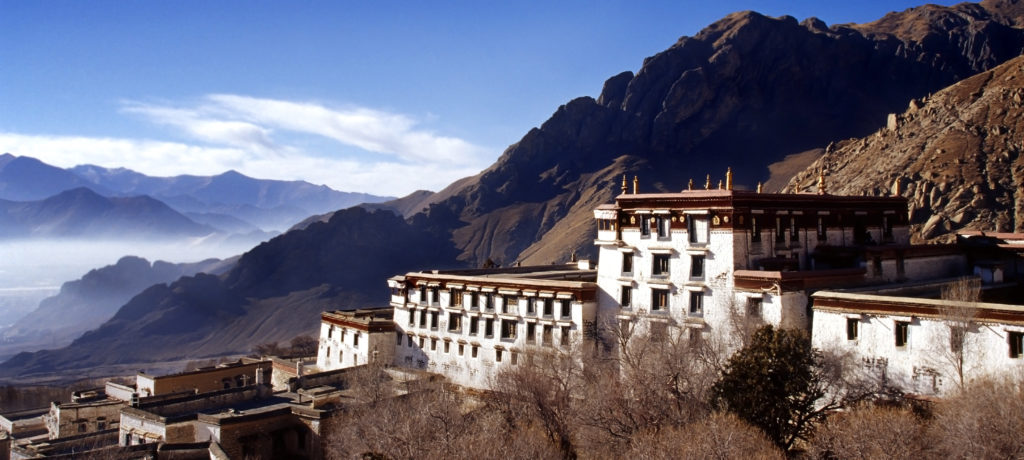
Drepung Monastery
Where to stay in Lhasa
Lhasa is a big city, but you really want to stay in the Old Town. That is where many of the main pilgrimage sites area as well as where many of the best restaurants. Other parts of Lhasa are bland and characterless. Here are a list of Tibetan-owned hotels (unless otherwise noted), in random order, that I recommend:
Kyichu Hotel: This has been my part-time home in Lhasa for well over a decade. The hotel is located less than 10 minutes walk to the Jokhang. The staff are excellent, they serve excellent Nepali and Tibetan food, wonderful breakfast and the location is perfect.
House of Shambhala and the Shambhala Palace: These are 2 good boutique-style hotels located in the heart of the Old Town. No elevators and spotty hot water as they are in very old buildings, but it is a lot of fun to stay here!
Shangbala Hotel: Located just 3 or 4 minutes walk from the Jokhang (and only 30 seconds away from the best coffee shop in town), this is a good 4 Star hotel option that is well priced.
Gang-Gyen Hotel: This is another “4 star” option, but can get very loud as most of the budget group tours stay here. Rooms are modern and clean, but breakfast is less than appealing. Many agents in Lhasa can get this is a great corporate rate.
St Regis Hotel: If you are looking for a 5 Star, international chain hotel, this is the best option in my opinion. The facilities are beautiful, food is excellent and the location is quite good. My only complaint is that few, if any, of the management people are Tibetan.
Yak Hotel: This 3 Star hotel is located just a short walk from the Jokhang and has been quite popular for many years. The Tibetan staff are friendly, rooms are modern and breakfast is decent.
Rama Kharpo Hotel: Though a little difficult to reach as vehicles can’t drive to it, this quiet Tibetan-owned place is friendly and comfortable. They offer both dorm-style rooms along with private standard rooms.
Tashi Choeta Boutique Hotel: Few foreign travelers stay here, but this nicely designed hotel is quite pleasant. The hotel is built around an open courtyard. If people are being loud in the lobby, it can echo up to the higher floors.
Shangri La Hotel: Not located in the Old Town, but just west of the Potala Palace, this is another 5 Star hotel in Lhasa. It is a very nice hotel with an excellent buffet dinner each night, however, its location is somewhat inconvenient as it is too far to walk to the Old Town.
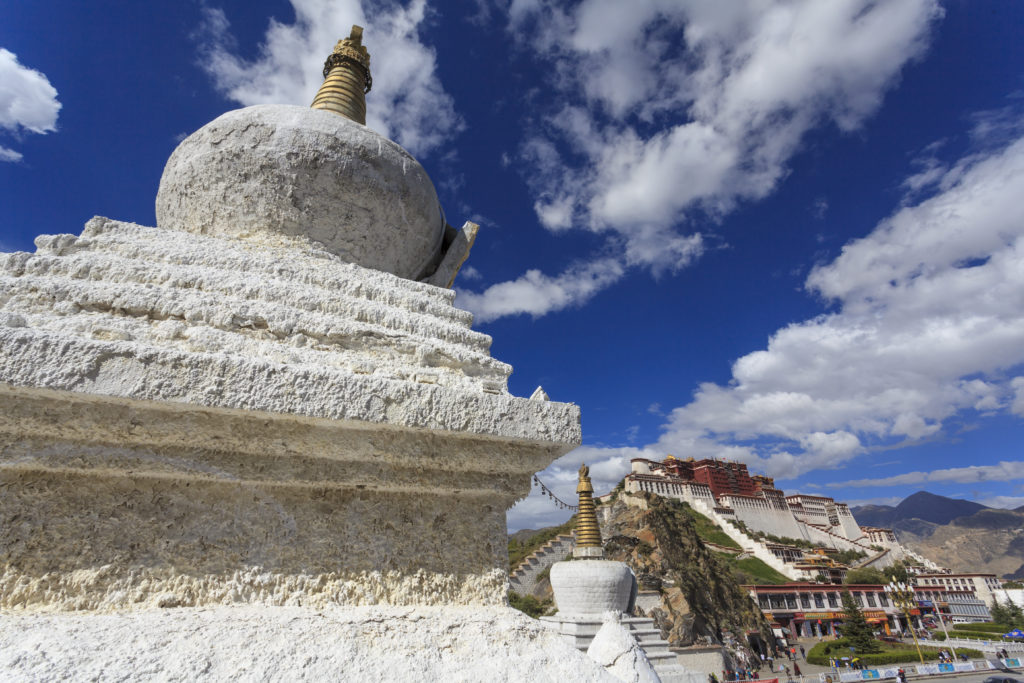
The West Stupa beneath the Potala Palace
Summary of Lhasa, Tibet
- No journey to Tibet is complete without spending at least a few nights in Lhasa. It has many of Tibet’s most sacred temples and monasteries and is always full of Buddhist pilgrims.
- All foreigners going to Tibet, including to Lhasa, must be on an organized tour.
- The winter months bring even more pilgrims to Lhasa than other times of the year.
- The best places to stay in Lhasa are in and around the Old Town.
- The 2 main ways to reach Lhasa are by flight and by train. Chengdu is the easiest place to fly to Lhasa from as there are more than a dozen direct flights per day between the two cities.
If you have any questions about Lhasa, Tibet, what travel company to use or how to get to Lhasa, email us via info@thelandofsnows.com
